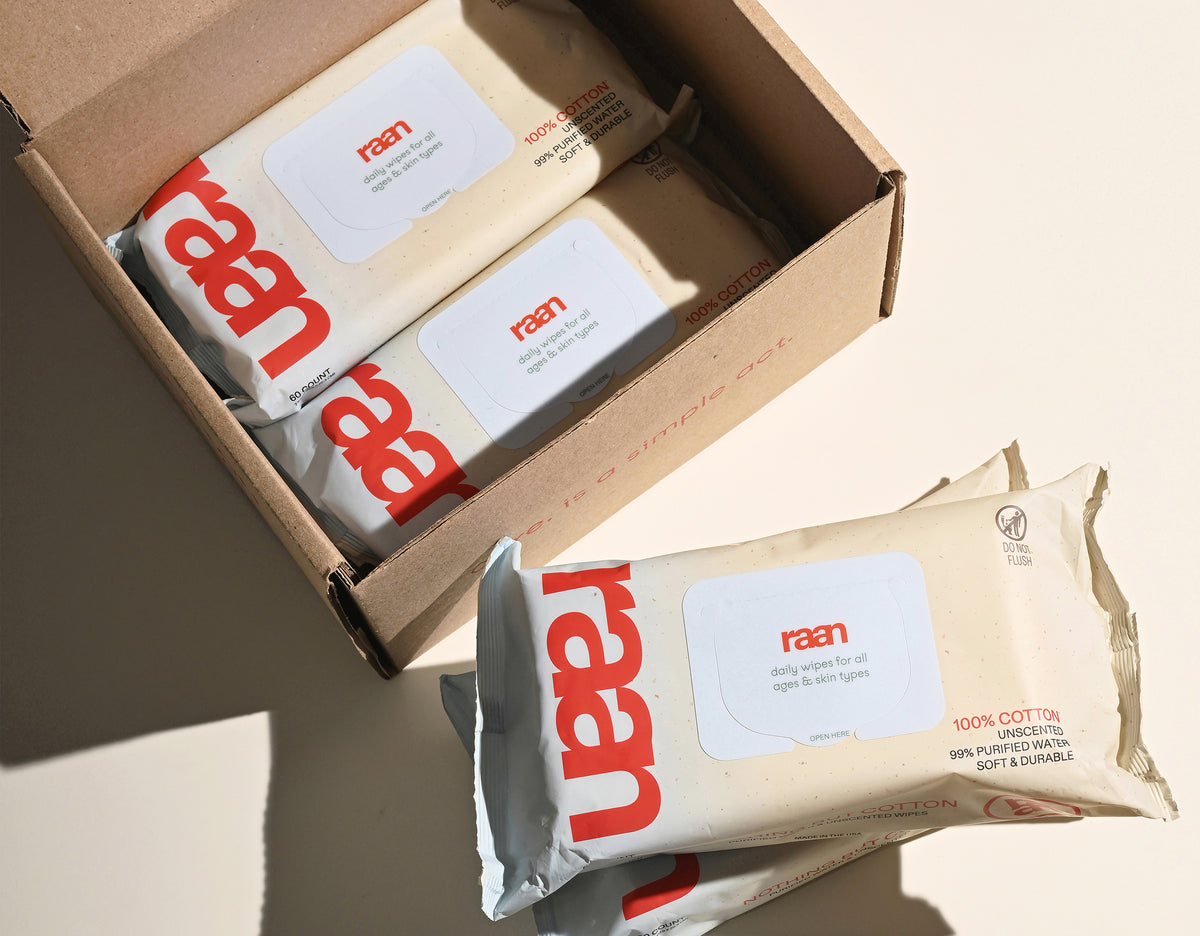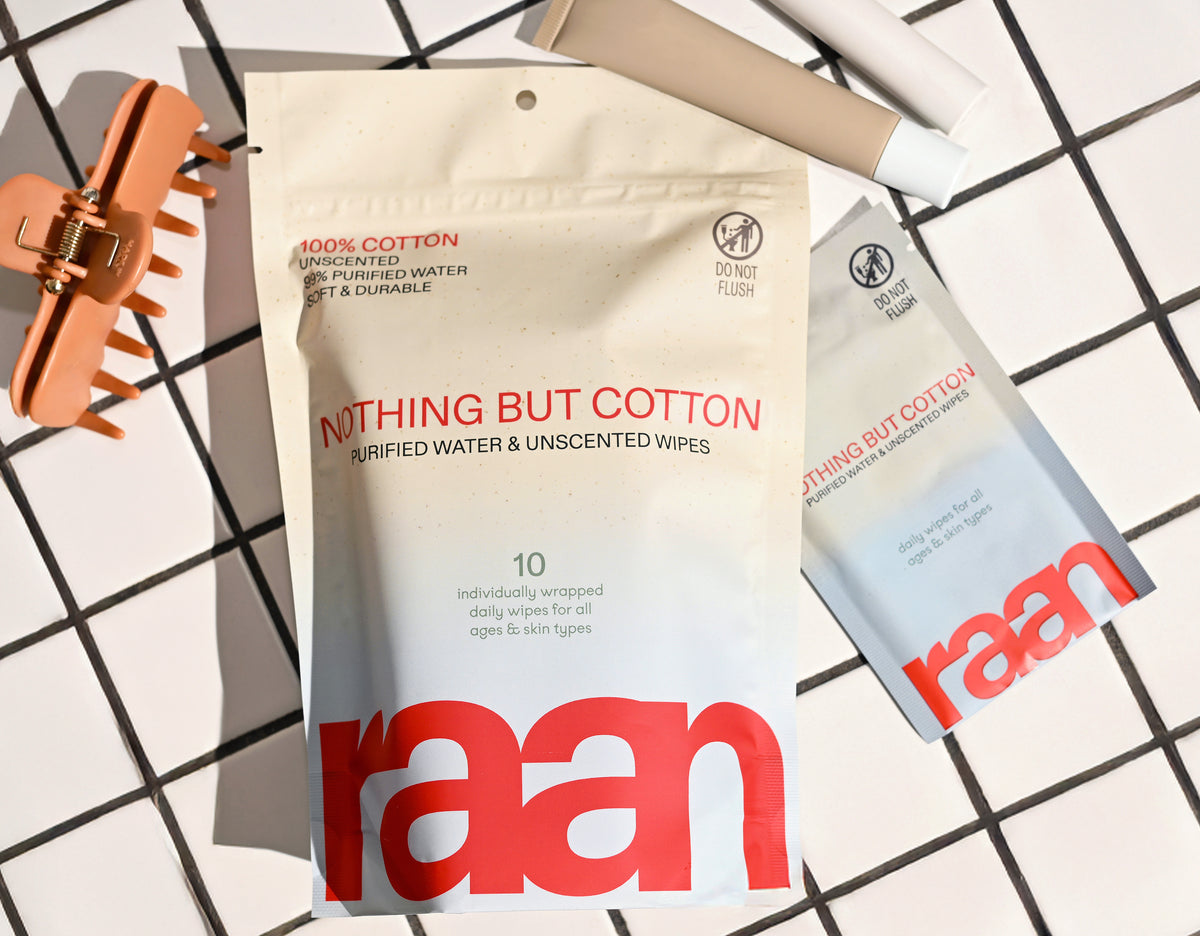When you can't step into a shower or sink into a warm bath, a sponge bath becomes your lifeline to staying clean and comfortable. Whether you're caring for a newborn whose umbilical cord hasn't healed, helping a loved one recover from surgery, or dealing with limited mobility yourself, mastering the sponge bath technique ensures everyone gets the gentle, thorough care they deserve.
Key Takeaways
- A sponge bath cleanses the body using a wet washcloth or sponge without full immersion in water.
- Sponge baths are essential for newborns before their umbilical cord heals and for individuals who cannot shower safely.
- The process involves washing one body section at a time while keeping the rest covered for warmth and privacy.
- Sponge baths provide a gentle and thorough way to maintain hygiene for those with limited mobility or recovering from surgery.
- Mastering sponge bath techniques ensures safe and comfortable care for yourself or loved ones in need.
Table of Contents
- What Is a Sponge Bath?
- When and Why to Give a Sponge Bath
- Essential Supplies for Safe Sponge Baths
- Step-by-Step Guide: How to Give a Sponge Bath
- Special Considerations for Newborn Sponge Baths
- Best Practices and Common Mistakes to Avoid
- Essential Products and Supplies for Effective Care
- Troubleshooting Special Situations
- Conclusion: Building Confidence in Essential Care
We see this all the time — new parents feeling overwhelmed by their first newborn sponge bath, or family caregivers unsure how to help an elderly relative maintain dignity while staying clean. The truth is, a well-executed sponge bath can be just as effective as a traditional shower when done correctly, and often more comfortable for vulnerable skin.
What Is a Sponge Bath?
A sponge bath is a cleansing method that uses a damp washcloth, sponge, or wipes to clean the body without requiring the person to sit or stand in water. Unlike showers or traditional baths, sponge baths happen wherever the person is most comfortable — usually in bed, on a changing table, or seated in a chair.
The key difference lies in the approach: instead of water flowing over the entire body, you're washing one area at a time, keeping the rest of the body covered and warm. This targeted method makes it perfect for situations where traditional bathing isn't safe or practical.
For newborns specifically: Pediatricians recommend sponge baths until the umbilical cord stump falls off completely, typically 1-2 weeks after birth. Submerging the cord area in water can increase infection risk and delay healing.
When and Why to Give a Sponge Bath

Sponge baths aren't just for emergencies — they're often the safest, most comfortable option for specific situations. Here's when this gentle cleaning method makes the most sense:
For newborns and infants: Before the umbilical cord heals, during illness, or when you need a quick refresh between regular baths. Newborn skin is delicate, and the controlled nature of a sponge bath reduces the risk of temperature shock or overstimulation.
For adults with limited mobility: Post-surgical recovery, chronic illness, or temporary injuries that make standing in a shower dangerous. We've learned that maintaining regular hygiene during these vulnerable times isn't just about cleanliness — it's about preserving dignity and mental well-being.
Emergency or travel situations: When running water isn't available, or you're caring for someone in a hospital bed, camping, or during power outages.
Essential Supplies for Safe Sponge Baths
Having the right supplies makes the difference between a stressful experience and a gentle, effective cleaning routine. Here's what you'll need:
Water and containers: Two basins work best — one for soapy water, one for clean rinse water. Keep water comfortably warm but not hot, especially for newborns whose skin is more sensitive to temperature changes.
Gentle cleansers: Choose mild, fragrance-free options that won't irritate sensitive skin. No-rinse cleansers can be particularly helpful for bedridden individuals, while newborns often need only warm water for most areas.
Soft washcloths or wipes: You'll want several clean washcloths — never use the same one for different body areas. For newborns, unbleached cotton wipes offer the gentlest option, free from synthetic fibers that can irritate delicate skin.
Towels and coverings: Multiple soft towels for drying, plus a clean sheet or bath blanket to keep the person warm and maintain privacy during the process.
Protective gear: Disposable gloves for caregivers, especially when helping with intimate areas, and waterproof pads to protect bedding or furniture.
The quality of your supplies matters more than you might think. When you're working with sensitive newborn skin or helping someone who's already uncomfortable, harsh materials or chemical-laden products can turn a necessary care routine into an ordeal. We've found that investing in truly gentle, transparent products — like wipes made from 100% cotton with minimal, food-grade ingredients — makes every sponge bath safer and more comfortable for everyone involved.
Step-by-Step Guide: How to Give a Sponge Bath

The key to a successful sponge bath lies in working systematically from cleanest to dirtiest areas, keeping the person warm and comfortable throughout the process. Whether you're giving your first newborn sponge bath or helping an adult family member, this methodical approach ensures thorough cleaning while maintaining dignity and safety.
Preparation and Room Setup
Before you begin, create a warm, comfortable environment. Close windows and doors to prevent drafts, and ensure the room temperature is around 75-78°F — especially important for newborns who lose body heat quickly. Gather all your supplies within arm's reach so you never have to leave the person unattended.
For adults, raise the bed to a comfortable working height to protect your back. For newborns, ensure your changing surface is secure with raised edges or safety straps. Always keep one hand on a baby during the entire process.
Face and Neck: Starting Clean
Begin with the face using plain warm water — no soap needed unless specifically requested. Use a separate, clean washcloth for the face to avoid transferring bacteria from other body areas. Gently wipe from the inner corner of each eye outward, using a different section of the cloth for each eye.
For newborns, pay special attention to the creases around the neck where milk and spit-up can accumulate. These areas need thorough but gentle cleaning to prevent irritation and rashes.
Arms and Hands: The Systematic Approach
Uncover one arm at a time, keeping the rest of the body covered and warm. Start at the hand and work your way up to the shoulder, paying attention to creases at the wrist, elbow, and armpit. Don't forget between the fingers — these areas collect dirt and bacteria easily.
Rinse thoroughly with your clean washcloth, then pat dry immediately. The pat-dry technique is crucial for preventing skin irritation, especially on sensitive or compromised skin.
| Body Area | Cleaning Order | Special Considerations |
|---|---|---|
| Face | Eyes → nose → mouth → cheeks | Use plain water only |
| Arms | Hands → wrists → forearms → upper arms | Clean creases thoroughly |
| Torso | Chest → abdomen → back | Keep genitals covered |
| Legs | Feet → ankles → calves → thighs | Support joints when moving |
| Perineal | Front to back always | Fresh water and cloth required |
Torso: Chest, Abdomen, and Back
For the chest and abdomen, work from top to bottom, keeping the person's private areas covered at all times. This maintains dignity while allowing you to clean effectively. For women, lift each breast gently to clean underneath — this area is prone to moisture buildup and irritation.
When cleaning the back, you may need to turn the person gently. For adults with limited mobility, ask for help if needed. Support with pillows and move slowly to prevent discomfort or injury.
Legs and Feet: Circulation Considerations
Expose one leg at a time, starting with the feet and working upward. For elderly individuals or those with circulation issues, be extra gentle and watch for signs of swelling, discoloration, or skin breakdown. Between the toes is a commonly missed area that harbors bacteria and moisture.
When washing the upper thighs, be mindful of privacy and use a matter-of-fact approach to minimize embarrassment.
Perineal and Genital Area: Safety First
Always use fresh, clean water and a separate washcloth for the genital area. The golden rule here is front to back — this prevents transferring bacteria from the anal area to the urinary tract, reducing infection risk significantly.
For newborns, this area requires frequent attention due to diaper changes, but the same gentle principles apply. Use unbleached cotton wipes or soft washcloths, and avoid harsh rubbing that could irritate delicate skin.
Important: Never use the same washcloth for multiple body areas, especially after cleaning the genital region. This cross-contamination can lead to infections, particularly dangerous for newborns or immunocompromised individuals.
Special Considerations for Newborn Sponge Baths
Giving a sponge bath to a newborn requires extra attention to temperature, support, and gentleness. Newborns lose body heat rapidly, so work quickly but thoroughly, keeping them covered except for the area you're actively cleaning.
The umbilical cord area needs special care — clean around it gently with a damp cloth, then pat completely dry. Never submerge the cord stump in water, as this can delay healing and increase infection risk. Most pediatricians recommend alcohol-free care, letting the area air dry when possible.
Support your baby's head and neck at all times. Many new parents find it helpful to wrap the baby in a towel with arms free, then unwrap only the area being cleaned. This swaddling technique keeps babies calmer and warmer during the process.
For newborn skin, less is often more. Plain warm water handles most cleaning needs, with gentle, fragrance-free cleansers reserved for particularly messy areas. The goal is maintaining cleanliness without stripping away the protective oils that keep newborn skin healthy.
Best Practices and Common Mistakes to Avoid

Even with the best intentions, certain mistakes can compromise the effectiveness and safety of a sponge bath. The most common error is using water that's too hot or too cold — always test with your wrist or elbow before applying to skin. Water should feel comfortably warm, not hot.
Another frequent mistake is rushing through the process. Taking your time ensures thorough cleaning and shows respect for the person's dignity. This is especially important when learning how to give a sponge bath to a newborn, where patience and gentleness are essential.
Never reuse dirty water or washcloths between body areas. This cross-contamination can spread bacteria and cause infections. Keep your clean and soapy water basins separate, and change the water if it becomes cool or visibly dirty.
Pro Tip: Use unbleached, 100% cotton wipes or washcloths for sensitive skin. These materials are gentler than synthetic alternatives and won't leave residue that could irritate delicate areas, especially important for newborns and elderly individuals with compromised skin.
Maintaining Dignity and Comfort
Privacy and dignity should never be compromised during a sponge bath. Always explain what you're doing, especially with adults who may feel vulnerable or embarrassed. Use a matter-of-fact tone and maintain eye contact when speaking, but give them privacy to look away during intimate care.
Keep the person covered except for the area being cleaned. Use towels or blankets strategically to maintain warmth and modesty. For newborns, this also prevents heat loss, which can be dangerous for their developing temperature regulation systems.
Monitoring Skin Health During Care
Each sponge bath is an opportunity to check for skin problems. Look for redness, swelling, cuts, or unusual marks that might indicate pressure sores, infections, or other issues. This is particularly important for bedridden individuals or those with limited mobility.
For newborns, watch for diaper rash, cradle cap, or any unusual bumps or discoloration. Early detection of skin problems allows for prompt treatment and prevents complications.
Pay special attention to skin folds and creases where moisture can accumulate. These areas — under arms, between toes, under breasts, and in the groin — are prone to fungal infections and irritation if not properly cleaned and dried.
Essential Products and Supplies for Effective Care
The right supplies make all the difference in giving a safe, comfortable sponge bath. Quality matters, especially when caring for sensitive skin or newborns. Here's what healthcare professionals recommend for optimal results.
Gentle Cleansing Products
Choose mild, fragrance-free cleansers specifically designed for sensitive skin. No-rinse body washes are excellent for situations where thorough rinsing is difficult. These products clean effectively without requiring extensive water use, making them ideal for bedridden individuals.
For newborn sponge baths, plain warm water handles most cleaning needs. When soap is necessary, use tear-free, hypoallergenic formulas designed for baby skin. Avoid products with fragrances, dyes, or harsh preservatives that can cause irritation.
Cotton Wipes and Washcloths
Unbleached, 100% cotton wipes offer superior gentleness compared to synthetic alternatives. They're naturally absorbent, don't leave residue, and are safe for the most sensitive skin. Unlike plastic-based wipes, cotton won't cause micro-tears in delicate skin.
Have multiple washcloths available — at least four per bath. Use separate cloths for face, body, and genital areas to prevent cross-contamination. This systematic approach is crucial for maintaining hygiene standards.
For on-the-go care, individually wrapped wipes for travel/hospital provide a hygienic and convenient solution, ensuring you always have a fresh, gentle option available.
Temperature Monitoring Tools
A bath thermometer takes the guesswork out of water temperature. Ideal water temperature for sponge baths is 98-100°F (37-38°C) — warm enough to be comfortable but not hot enough to cause burns or discomfort.
For newborns, temperature control is even more critical. Their skin is thinner and more sensitive to temperature changes, making accurate monitoring essential for safe care.
Troubleshooting Special Situations
Not every sponge bath goes according to plan. Knowing how to handle common challenges ensures you can provide consistent, quality care regardless of circumstances.
Working with Limited Mobility
When caring for someone with limited mobility, positioning becomes crucial. Use pillows and rolled towels to support comfortable positioning. If turning is necessary, do it slowly and ask for help if the person is heavy or has specific medical conditions.
For individuals with joint problems or arthritis, warm washcloths can provide soothing relief while cleaning. The gentle warmth helps relax muscles and makes the experience more comfortable.
Dealing with Resistance or Anxiety
Some people, particularly those with dementia or cognitive impairments, may resist bathing. Approach with patience and try to understand their concerns. Sometimes, explaining each step or letting them hold a washcloth can provide comfort and cooperation.
For anxious newborns, try swaddling techniques or playing soft music to create a calming environment. Some babies respond well to gentle talking or singing during their sponge bath.
Conclusion: Building Confidence in Essential Care
Mastering the sponge bath technique empowers you to provide dignified, effective care when traditional bathing isn't possible. Whether you're giving your first newborn sponge bath or helping an elderly family member, the principles remain consistent: gentle technique, systematic approach, and attention to comfort and dignity.
Remember that practice builds confidence. Each sponge bath becomes easier as you develop your routine and understand the person's preferences. The key is maintaining patience, using quality supplies, and never compromising on hygiene standards.
This essential caregiving skill serves multiple populations — from newborns waiting for their umbilical cords to heal to elderly individuals who can no longer shower safely. By following these evidence-based techniques and using appropriate products, you're providing more than just cleanliness — you're offering comfort, dignity, and health protection when it's needed most.
The investment in learning proper sponge bath techniques pays dividends in improved health outcomes, enhanced comfort, and the peace of mind that comes from knowing you're providing the best possible care for those who depend on you. For more tips on choosing the right wipes, see our guide to the best cotton wipes for sensitive skin, or consult this external resource on sponge bath safety and technique for additional guidance.
Frequently Asked Questions
What exactly is a sponge bath?
A sponge bath is a method of cleaning the body using a damp cloth or sponge without fully immersing in water or taking a shower. It’s often used when a full bath or shower isn’t possible, relying on gentle wiping to refresh the skin and remove sweat, dirt, and oils.
How to give an adult a sponge bath?
To give an adult a sponge bath, gather warm water, mild soap, and soft cloths. Start by washing the face, then move to the neck, arms, torso, and legs, rinsing the cloth regularly. Focus on areas prone to sweat and odor, drying the skin thoroughly after to prevent irritation.
What is the sponge bath procedure?
The sponge bath procedure involves preparing warm water with a gentle cleanser, using a soft cloth or sponge to wipe the body in sections, rinsing the cloth frequently, and paying special attention to folds, underarms, and groin. After washing, the skin should be gently patted dry and moisturized if needed.
Is a sponge bath just as good as a shower?
A sponge bath can effectively clean the skin when a shower isn’t an option, but it usually doesn’t replace the thorough rinsing and cleansing a shower provides. It’s a practical solution for maintaining hygiene between showers or during limited mobility, though it may not remove all residues as deeply as a full shower.
Can you really get clean from a sponge bath?
Yes, you can get clean from a sponge bath when done properly with warm water and a mild cleanser, especially by focusing on key areas like the face, underarms, and groin. While it may not be as thorough as a shower, it removes surface dirt, oils, and sweat to keep the skin fresh and comfortable.
How long can you last without a shower?
How long you can go without a shower depends on your activity level, skin type, and personal comfort, but generally, going a few days is fine if you use alternatives like sponge baths or cleansing wipes. Skin naturally manages oils and bacteria, but regular washing helps prevent buildup, odor, and irritation.
Is a sponge bath as effective as a shower?
For everyday hygiene, a properly done sponge bath can keep skin clean, fresh, and comfortable, especially when a full shower is not possible (post-op, limited mobility, new parents, hospital stays). If you are very sweaty or soiled or need to wash hair, a quick shower is usually more efficient. Use warm water, soft 100% cotton wipes or a clean washcloth, clean from top to bottom, pat dry, and moisturize.
What to use for a hospital sponge bath?
Warm water in a clean basin, soft cotton wipes or a washcloth, a mild no-rinse cleanser if permitted, disposable gloves, dry towels, and a gentle moisturizer. Keep the person warm and covered, change water if it gets cloudy, and use a fresh section of the cloth for each body area. If the care team supplies special antiseptic wipes, follow their instructions exactly and do not mix them with regular soaps or lotions.
Newborn sponge bath temperature?
Use warm water around 100°F (about 38°C) and make sure the room is cozy and draft-free. Test the water on the inside of your wrist or elbow. It should feel warm, not hot. Until the umbilical stump falls off, stick to gentle sponge baths with plain water, keep them brief, and dry baby quickly. For safety at home, set your water heater to at most 120°F (49°C).
This is general information, not medical advice. Always follow your clinician’s guidance for your specific situation.






